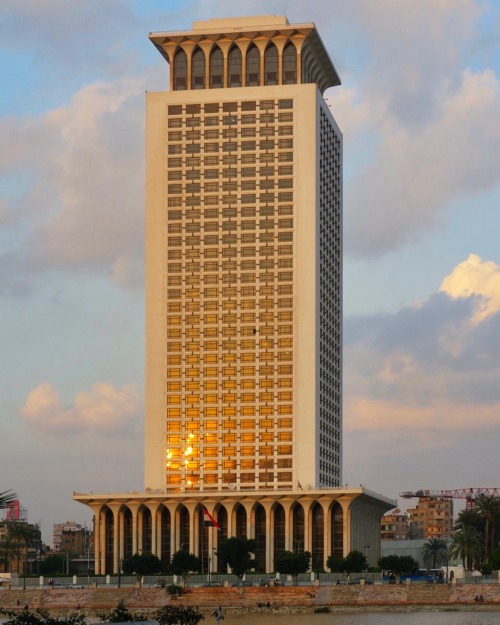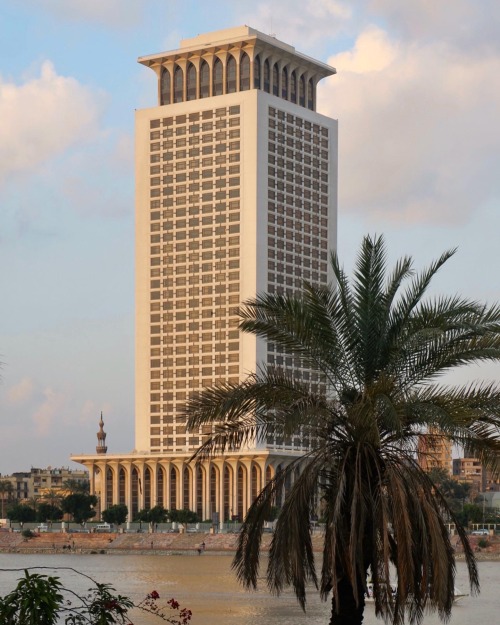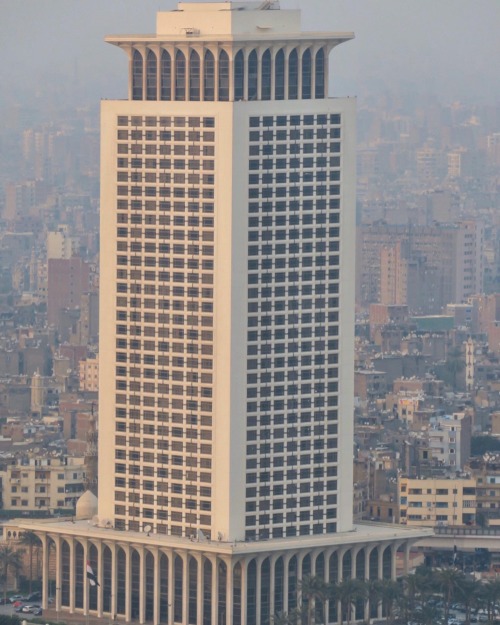#new formalism
Along central Cairo’s Nile Corniche stands the crisp grandeur of another enormous state institution: the Egyptian Ministry of Foreign Affairs. This palatial skyscraper embraces the tripartite assembly of New Formalism: the building rises on a broad plinth, with the ground-floor glazed lobby recessed behind a double-colonnade porch of creased pilotis which flute into papyrus-blossom capitals—a modernist motif that became quite widespread in late-modern Egyptian architecture for a prolonged period. Above this girthy tower, gridded with deep-tinted thermal windows, is crowned by a tall, tinted-glass-box capital bordered by a set of papyrus columns which form pointed-arch window façades and hold up an overhanging flat roof to shade the top-level reception space and echo the building’s base.
This rather handsome, cream-toned neoclassical composition suggests that one of the legends of the New-Formalist era—Edward Durrell Stone, Welton Becket, or especially Minoru Yamasaki—received an exotic dream commission on the banks of the Nile. Not only was this tower not conceived by an internationally-renown star—the tower was engineered and built by a consortium of large Egyptian firms—it was completed not in Sadat-era 1970s but in 1994, long after the style’s popularity and profusion. Yet it demonstrates, however anachronistically, the style’s enduring ability to elegantly project institutional power.
The Ministry of Foreign Affairs of the Arab Republic of Egypt. Arab Contractors with ACE Consulting Engineers, completed 1994. Photos March 2020 Bauzeitgeist.
Post link



